For some of us, getting braces can be a little intimidating at first.
Sure, braces will give you straight teeth, but what if a part breaks at school or work? And what are all those weird accessories your braces come with? Are braces really worth the potential discomfort?
In short, yes. The benefits of braces go far beyond vanity (although who doesn’t love having a smile they can be extra proud of?)
Your teeth and mouth are an important part of your overall digestive and respiratory systems. Braces can improve your oral health, which in turn helps your whole body!
Here’s how:
- Straight teeth are easier to keep clean because the surfaces of your teeth are easy to reach. This helps prevent tooth decay caused by a build-up of food and bacteria, which is called plaque.
- When your teeth are misaligned, you can’t chew your food properly. Straight teeth help you chew your food better, making digestion easier for your body.
- Straight teeth from braces can help improve your speech. A misaligned jaw or teeth can cause speaking issues, like lisps and other difficulties.
Braces aren’t the only tool in helping you attain the best smile possible. Oftentimes, they’ll come with accessories to help you get the exact treatment you need.
These include things like retainers, expanders, and braces wax to minimize discomfort. Think of these as part of your ultimate braces care kit.
Enjoy this guide on the types of braces accessories that you might encounter on your journey to straight teeth, and rest assured knowing they’re helping your braces be as effective as possible.
Rubber Bands
When you or your child get braces, the orthodontist will provide you with a tiny, colorful bag of your own rubber bands. These rubber bands are a little different than the ones your orthodontist puts on braces brackets in that they’re designed to help with teeth and jaw alignment.
Oftentimes, your orthodontist will instruct you to connect the rubber bands from the hooks on a specific bracket in the top of the mouth to another specified bottom bracket.
While these may be slightly uncomfortable, these rubber bands are extremely handy in ensuring the bracket of the braces attached to the teeth move in the right direction, and you’re getting the best alignment.
Retainers
Once your braces come off, you’ll want to make sure your teeth stay straight and healthy, even as they go through the natural process of moving throughout your life. That’s why your orthodontist will provide you with a retainer.
The amount of time you use your retainer depends on your orthodontist’s recommendations for your personal needs. But without wearing your retainer as directed, there’s a chance your teeth can become misaligned again. It’s not a risk worth taking!
There are a few different types of retainers. The one you or your child will get will depend on individual needs, and risk of any teeth moving out of place.
Type of retainers
- Clear retainers: Clear retainers are a plastic sheath customized to fit directly over your teeth. Some people will need to wear them at night, while others will need to wear them day and night for around 6 months.
- Fixed retainers: Fixed retainers are a wire placed behind your teeth for permanent alignment protection. Fixed retainers can be used anywhere from 1-2 years to 10-20 years if your teeth are more prone to shifting.
- Wire retainer: A wire retainer is made up of a plastic piece formed to fit in the roof of your mouth, with a wire that goes around the front of your teeth to help keep them aligned.
Don’t worry about what type of retainer you’ll need, that’s what our orthodontists are here for! They’ll ensure you get the best treatment for your specific needs through the alignment process and beyond.
Expanders
Expanders are one of the most commonly used appliances for children. They can be used before braces are put on, or with braces to help expand the jaw.
Expanders need to be placed before your child’s palate is fused, which usually occurs between ages 14 and 16.
An expander is a metal piece that’s placed in the roof or bottom of your child’s mouth, depending on which part of your jaw needs to be expanded to fit more teeth. As your jaw widens, it makes more room for your teeth so they don’t become crowded.
The expander attaches to your back teeth. You’ll periodically adjust it with a small key to make it spread wider, in effect widening the jaw as well. There may be some pressure when the expander is being adjusted.
Braces Wax
When you visit the orthodontist to get braces or have them adjusted, your orthodontist will also provide you with small, portable containers of a special orthodontic dental wax.
This braces wax comes in tiny strips. It’s designed to help ease any discomfort caused by the braces’ wires that may poke your cheek, or if a bracket rubs against your lips or inside of your mouth.
To use your braces wax, first wash your hands. Next, simply pull off a tiny piece (about the size of a shelled sunflower seed) and roll it between your fingers to make it more flexible. Then place the dental wax over the braces wire or bracket that’s bothering you.
You’ll experience immediate relief as the poking or rubbing stops and you can only (barely) feel the smooth wax.
Braces wax also comes in handy if you experience a braces emergency, like a popped wire. You can use the dental wax to cover a broken bracket or braces wire and prevent it from rubbing or jabbing you until you’re able to see your orthodontist again.
Just be sure to replace it every day to avoid bacteria build up on the wax!
Beyond Accessories: What To Do In A Braces Emergency
Congratulations on your braces and taking a huge leap toward personal health! These accessories will ensure your experience with braces is customized fully to meet your unique needs, and ensure your smile is the best it can be.
And don’t worry, if something goes wrong like a loose braces wire or bracket damage, we’re here to help with that, too! But in the time between your braces emergency and when you can see us, it’s helpful to know what to do.

